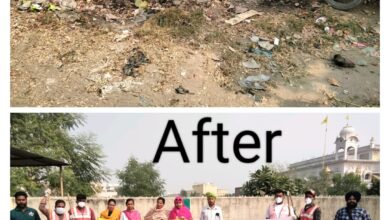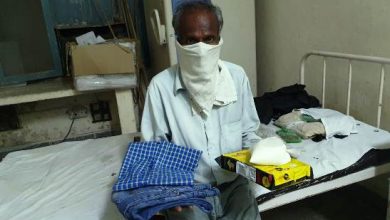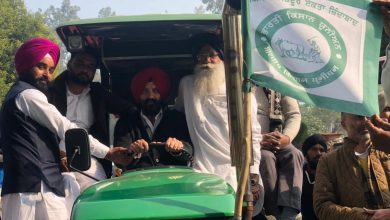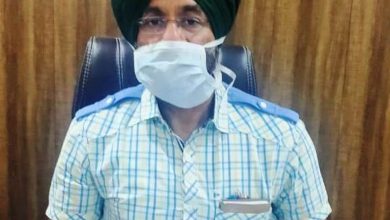On 'WORLD PILES DAY 20th NOVEMBER 2019' by DR. Monica Shrestha MS, Phd (Surgery)
On 'WORLD PILES DAY 20th NOVEMBER 2019' by DR. Monica Shrestha MS, Phd (Surgery)
WORLD PILES DAY 20th NOVEMBER 2019
Piles, also known as ‘Haemorrhoids’, are small, bluish swellings, comprising of enlarged blood vessels situated either just inside or just outside the anus commonly called internal piles and external piles. In case of bleeding, they are termed as bleeding piles.
Causes
• Persistent constipation due to poor dietary habits
• Sitting on hard seats for prolonged periods
• Lack of exercise
Because of all these factors, straining is needed to pass the small hard stools, which causes congestion in the network of blood vessels located inside the anal cushions. Gradually, these vessels enlarge and form piles. If constipation further continues, they become large enough to be called second or third degree piles.
Signs & Symptoms
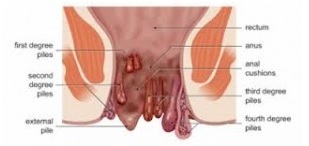
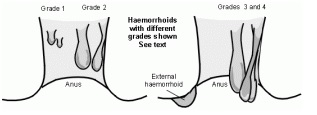
Internal piles: These are found inside the anal canal and lined by mucous membrane. Depending on the chronicity of the disease and prolapse these can be;
First-degree Piles:
Many people have these without even being aware of them. These are located just inside the anus, occasionally causing some discomfort when a motion is passed. Bleeding in the form of drops sometimes as splash in toilet pan occurs during the passing of stools.
Second-degree Piles:
They usually appear as pea-sized swellings outside the anus after a bowel motion has been passed. They are usually retained inside the anus spontaneously when
a strain of defecation is removed and may bleed as drops or as splash in pan (a large amount of bleeding) and cause discomfort during passing stool with some degree of itching and mucous secretion.
Third-degree Piles:
The swollen blood vessels are so enlarged that they remain outside the anus permanently. The piles' masses need to be pushed inside the anus by fingers. Soreness and persistent irritation are the common features besides occasional bleeding as drops or as a splash.
External Haemorrhoid (Perianal haematoma)
This is less common than internal haemorrhoids. An external haemorrhoid is a small lump that develops on the outside edge of the anus. It is covered by skin, not by mucous membrane. Many do not cause symptoms. However, if a blood clot forms in the haemorrhoid (a thrombosed external haemorrhoid) it can suddenly become very painful and need urgent treatment. The pain due to a thrombosed external haemorrhoid usually peaks after 48-72 hours, and then gradually goes away over 7-10 days. A thrombosed external haemorrhoid may bleed a little for a few days. It then gradually shrinks to become a small skin-tag.
Some people develop internal and external haemorrhoids at the same time.
Home remedies:
1. The poultice made of sesame (til) seeds can be applied over bleeding piles as an external measure, and internally also ½ teaspoonful of sesame seeds can be taken orally with some butter.
2. A mixture can be made of: Ripe bael fruit pulp = loz, Sugar = 180gms, Powder of black peppers = 7 in number, Cardamom powder = 7gms. This can be taken twice a day as a good remedy.
3. Radish (Muli) is a useful home remedy for piles.
• The hot poultice of dry radish (Muli) is a good application in non-bleeding piles.
• The juice is also useful in piles. 60 to 100 ml of radish juice well mixed with a little bit of salt, should be taken twice a day, daily for 40 days.
• Butter Milk: It is the home remedy of choice in piles. l00 ml well mixed with a little bit of black pepper powder, and salt should be taken daily for a few months at least. Ayurveda stresses upon daily intake of buttermilk by the piles' patients.
4. Hareetaki, popularly known as harad is a good remedy for constipation. The decoction of the fruit peel of harad (Terminalia chebula) is taken 1 cupful with jaggery at bed-time.
5. Rose petals, 11 in number crushed with 50 ml of water should be taken for 3 days on empty stomach. This is a very good remedy for bleeding piles. Banana fruit should not be taken along with this treatment.
Ayurvedic medicines:
1. Triphala churna: This should be taken regularly to remove constipation. 2 teaspoonfuls of powder well mixed in a glass of lukewarm water should be taken orally before retiring to bed. Externally also it is widely used in different methods. One popular method is to take a plastic tub, fill it with warm water to a level where one can sit comfortably. Add 10 teaspoonfuls of Triphala churna to the water and mix well for some time. Then the patient should sit in the tub, duly immersing the anus in the lukewarm water for 30 minutes. This should be carried out daily. This practise brings in enormous benefits to the piles patient.
2. Abhayarista: As an oral liquid preparation, it is also useful in constipation. 30 ml of the medicine dissolved in an equal quantity of lukewarm water should be taken before going to bed.
3. Many Ayurvedic ointments and oils are quite useful for local application.
4. Arshoghnivati tablet 1 to 2 tablets with water or butter milk can be taken thrice or four times daily.
5. Kankayan Vati is quite beneficial in piles.
Ayurvedic surgical treatments: Kshara sutra and Agnikarma
When internal piles bleed profusely and/or are in 2nd or 3rd or 4th degree, medicines do not have much benefit. In such case the piles masses have to be removed surgically. In Ayurveda Kshara sutra ligation and Agnikarma excision are the procedures which can be used to remove the piles masses (Internal as well as external) thus leading to a permanent cure of the problem. One should not hesitate or have any kind of fear of surgical procedures and should consult a qualified expert Ayurveda doctor to get rid of the problem. Delay may sometimes lead to serious complications like severe anaemia due to continual bleeding and shock and so on.
External piles if get thrombosed need immediate surgical intervention because of severe pain. Kshara sutra ligation and Agnikarma are equally beneficial in curing external piles permanently.
NOTE: Ayurvedic medicines and treatments including surgical procedures like kshara sutra and agnikarma etc. should be taken under Qualified Ayurvedic Doctor/Physician/Surgeon. The drugs described in this article are for general information/educational purpose only. Anyone should not use these without consulting a qualified Ayurveda doctor/physician.
Author: DR. Monica Shrestha
MS, PhD (Surgery)
Assistant Professor
Dept. Of Surgery
Harmony Ayurveda College and Hospital


